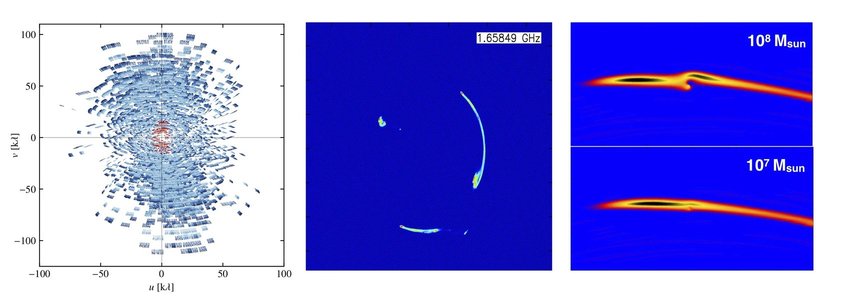
Strong Gravitational Lensing
Research Focus
Light rays in the Universe travel along paths that are called geodesics. In the proximity of massive objects, like galaxies and galaxy clusters, space-time is distorted, and the geodesics are not straight lines but are curved. As a result, the light emitted from a distant source will appear as deflected from its original position. This effect is known as gravitational lensing and is a key prediction of Einstein's Theory of General Relativity. In the so-called regime of strong gravitational lensing, one observes multiple distorted images of the source. These carry invaluable information about the physics of the Universe.
In Simona Vegetti's LME research group, we take advantage of this effect to investigate a range of astrophysical phenomena. Our approach combines the development of lens modelling codes and high-angular resolution data from optical imaging and radio/mm/sub-mm interferometric observations. Our investigations focus on 1 - the distribution of dark matter on subgalactic scales within lens galaxies and along their line of sight, 2 - the properties of magnetic fields within the lenses and 3 - the physical and kinematic properties of the strongly lensed high-redshift galaxies.
Our long-term goals are to derive observational constraints on the nature of dark matter and its interplay with baryonic processes, quantify star formation and AGN activity at cosmologically interesting epochs on sub-kpc scales and quantify the role of magnetic fields in the evolution of distant galaxies.
More information on our group can be found here.
If you are interested in joining us, contact svegetti(at)mpa-garching.mpg.de.